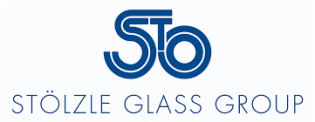The concept of “Imposter Syndrome” can be traced back to the 1970s. It’s a term used to describe persistent feelings of self-doubt and a fear of being uncovered as a “fraud” despite being competent and capable.
People experiencing imposter syndrome will often down-play achievements and attribute their successes to luck. They may also pass up opportunities for career progression by not putting themselves forward for challenging projects or promotions.
Someone with imposter syndrome might also overcompensate by over-preparing or setting unrealistically high standards for themselves, which can lead to stress and burnout.
Why is imposter syndrome more common in women?
Although imposter syndrome can impact people of any gender and at any stage of their career, women tend to experience imposter syndrome more frequently and intensely than men.
Research has indicated that about 75% of female executives have experienced imposter syndrome during their careers and there are several factors that can contribute to imposter syndrome in women:
Gender bias
Some managers underestimate the technical abilities of women or make assumptions about their leadership style. They might ask a male colleague about his strategic vision, while praising a female colleague on her people skills. This can make women feel as though their opinions on certain topics aren’t valued. Women are also judged more harshly for mistakes, which can fuel feelings of inadequacy and self-doubt.
Societal conditioning and stereotypes
Stereotypes and societal expectations play a huge part in imposter syndrome. Women are “supposed” to be modest and nurturing, not assertive and opinionated. This can result in women second-guessing themselves and staying quiet instead of sharing their ideas.
Double standards
Some traits are viewed as being positive when being attributed to men, but negative for women. For example, a man who is confident, decisive and assertive will often be viewed as strong and direct, whereas a woman with the same traits may be viewed as bossy, arrogant, intimidating and even unlikeable.
Underrepresentation
Certain industries are still heavily dominated by men. The scarcity of female mentors and leaders makes it harder for women to find validation and acknowledgment, reinforcing the idea they do not belong or are less capable. The absence of women (especially women from marginalised groups) reinforces the sense of not belonging or being underqualified.
Pressure to be perfect
“Have it all” stereotypes perpetuate the idea that women must excel simultaneously as professionals, mothers, partners, and caregivers. When women inevitably encounter flaws or failures, these societal pressures exacerbate their feelings of self-doubt.
Beauty and appearance stereotypes
For decades, women have been judged on appearance and held to ridiculous beauty standards. The constant focus on appearance sends the message that a woman’s worth is superficial, and other attributes are less important. As a result, women may question whether their achievements are due to skill or just being perceived as attractive.
Workplace environments not designed for women
Many workplaces have been shaped by men, leading to a lack of consideration for female-specific experiences. This contributes to women feeling they must constantly prove their worth and competence, feeding imposter feelings. Pay inequality also tells women that their capabilities are less valued. This external devaluation reinforces internal feelings of not belonging or being qualified.
Disproportionate pressures and mental load
Women frequently juggle caregiving responsibilities alongside demanding careers, adding stress that can manifest as feelings of incompetence or fear of being “found out” as inadequate.
Slower career progression due to self-doubt
Research has shown that women are less likely to apply for a role if they don’t meet 100% of the criteria, whereas men are more likely to apply even if they don’t tick all the boxes. This can mean slower career progression for women, leaving them feeling as though they aren’t as good.
Behaviour driven by imposter syndrome
Someone with imposter syndrome may overprepare, procrastinate, or avoid sharing ideas for fear of not being good enough, which can undermine their sense of genuine competence and feed a self-reinforcing cycle of imposter syndrome.
Impact on recruiting women to leadership roles and how to address the problem
Imposter syndrome is a problem when it comes to recruiting and promoting women to leadership roles.
Competent and talented women may hesitate to apply for leadership roles unless they meet 100% of listed qualifications.
Self-doubt can also undermine their confidence in presenting achievements and this reluctance to self-promote can make them less visible to decision-makers.
In addition, talented women will leave workplaces where gender bias or pay disparity is heightening their feelings of inadequacy. They will seek out companies where they feel more valued.
All these things will lead to homogeneous leadership teams, reducing innovation and diverse perspectives as well as reducing morale among underrepresented employees.
So how can you address the problem of imposter syndrome and give women the confidence to apply for leadership roles?
How can you build a culture that empowers women, diminishes the negative impact of imposter syndrome, and supports the progression of talented women?
Normalise discussions about self-doubt
Encourage your leaders (both men and women) to share their experiences of imposter syndrome. This reduces stigma and helps people understand they are not alone in feeling self-doubt. Incorporate such discussions into leadership training, mentorship, and performance reviews to make it feel less taboo.
Provide constructive feedback and set realistic goals
Vague or personality-based critiques, such as, “You should be more confident” can lead to internalised criticism. Provide skills-focused feedback and identify specific opportunities for development. Help women set clear attainable goals to prevent overwhelm and encourage recognition of incremental achievements to build confidence over time.
Be an advocate for talented women
Research shows that women are less likely to ask for what they want than their male peers. Be an advocate for high-potential female employees and peers. Ensure they have interesting project work. Recommend them for stretch projects and promotions. Be proactive in identifying talented women and encourage them to apply for senior roles.
Reduce gender bias and stereotypes
Actively identify and address systemic biases that reinforce imposter syndrome, such as biased promotion practices, lack of diversity in leadership, and disproportionate scrutiny. Use data-driven approaches to monitor promotion rates and employee sentiment and promote based on suitability rather than assumptions.
Offer coaching and mentoring opportunities
Provide opportunities for women to build on their unique strengths rather than concentrating solely on perceived weaknesses. Offer workshops, coaching, mentorship, peer support groups, and tools that equip women with practical strategies to manage imposter feelings.
Developing your leaders with Alternative Partnership
Alternative Partnership offers a range of support for leaders of any gender and any level of experience.
As well as delivering leadership coaching ourselves, we also deliver accredited Coaching and Mentoring training programmes. Not only do learners improve their skills and knowledge, they also gain a nationally recognised, formal qualification.
Having qualified coaches and mentors within your organisation will help you develop future leaders and attract better candidates to leadership roles.
As well as Coaching and Mentoring qualifications, we also offer ILM-accredited Leadership and Management training programmes.
Find out more about our current ILM courses here or get in touch to discuss how our services could benefit you.












